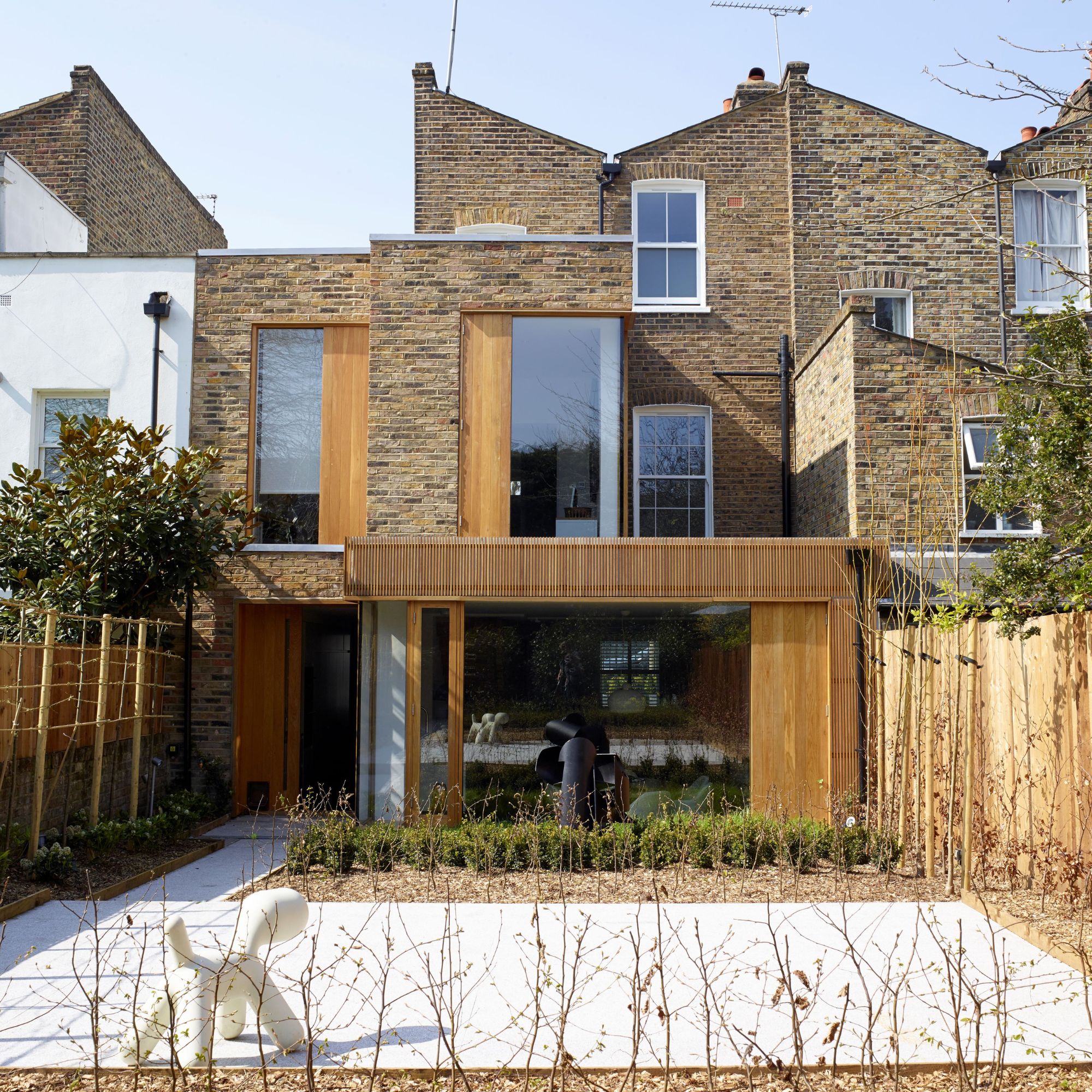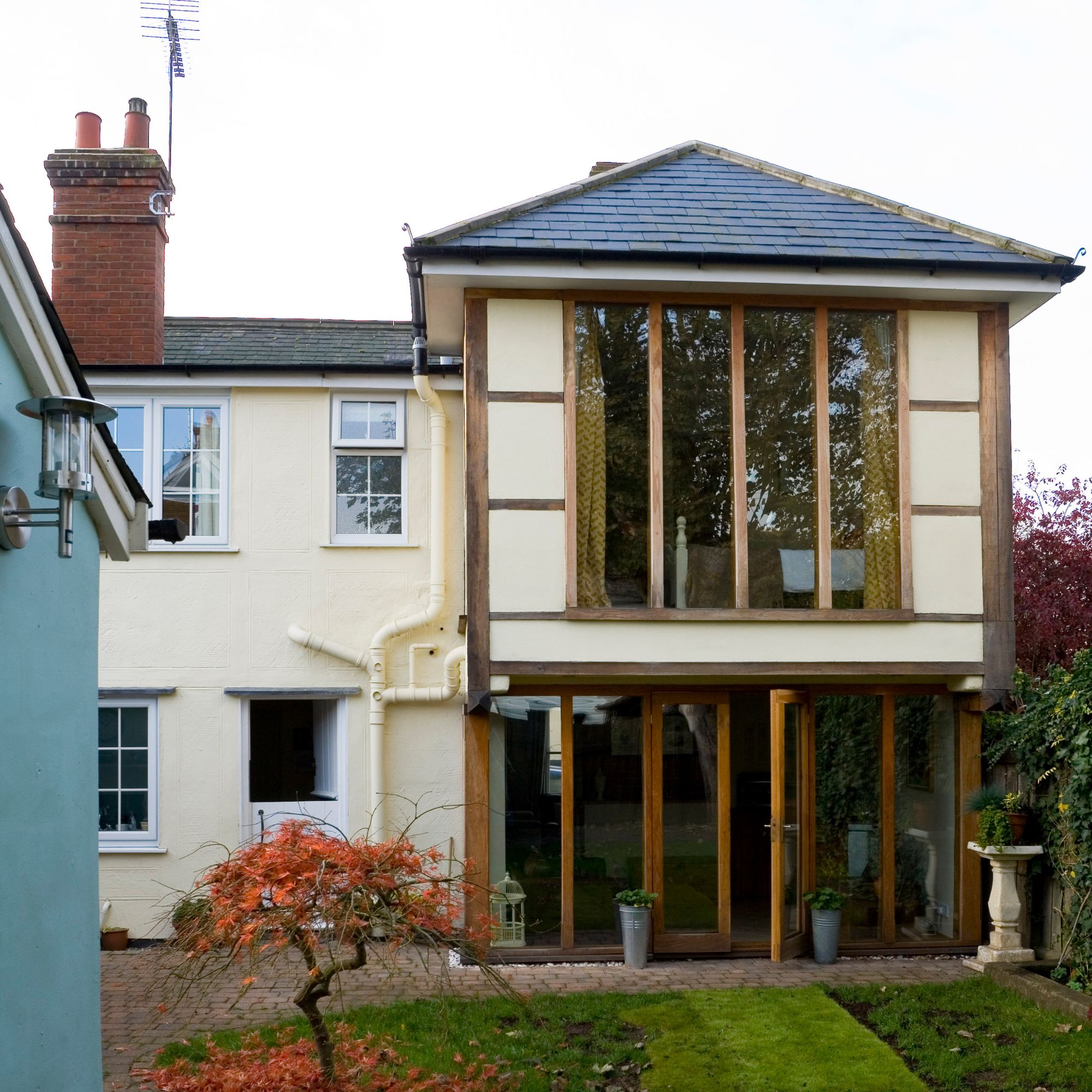
If you're trying to budget for a double-storey addition to your home, you'll need to know how much a two-storey extension costs. After all, adding an extension of this size promises more than extra space. It can provide the opportunity to rework the layout in a way that suits the way we want to use our homes in the 21st century. But, transforming a home by building onto it is, of course, a major investment.
Whether your extension ideas call for a basic, good or premium specification, when building an extension over two storeys, it's important to get your finances in order.
Get in the know about what a double-storey addition can cost and you can weigh it up against a single-storey version, and it can even help you decide if sizing up your home is a better option than moving, which comes with its own costs.
How much does a two-storey extension cost?
In order to draw up a budget, it’s important to be aware of what you can expect to spend. ‘Costs for a two-storey extension can vary widely depending on location, complexity, and quality of materials,’ explains Rachel Moors, managing director of home transformation experts Adamsons. ‘However, as a general guide, UK homeowners can expect the following per square metre: basic specification: £1,850 per square metre; good specification: £2,200 per square metre; premium specification: £2,600 to £3,500 per square metre. These price bands reflect the level of finish and materials used in the extension,’ she says.
As these are costs per square metre, the final bill will be influenced by whether the extension has a small, medium or large footprint with the latter the most costly option.

It’s important to know what’s included in these guide costs, in order to draw up your budget. ‘The per square metre costs cover the primary structure and basic features, which vary by specification level,’ says Rachel, and she defines them as:
- Basic: a plastered shell with pendant lighting, white UPVC windows, several electrical sockets, and one radiator.
- Good: a plastered shell with recessed lighting, coloured window frames (eg, anthracite), designer radiators, and high quality LVT or tiled flooring.
- Premium: recessed and LED mood lighting, anthracite-coloured window frames, underfloor heating, potential Velux windows, and premium interior finishes. These may also include a vaulted ceiling, oak or high-end doors, LVT or tiled flooring, and a fully fitted bedroom or bathroom if budget permits.
‘A reputable company should offer an inclusive package covering architect, design, planning, and structural calculations,’ she adds.
What other costs need to be considered?
As well as budgeting for the structure you should factor in additional costs. Rachel suggests the following:
- Architect: £1,000 to £8,000, depending on their level of involvement, from initial design to full project management.
- Structural engineer: £300 to £1,200 for structural calculations and ensuring adherence to building regulations.
And you should also set aside money for the fit out of the new rooms the extension will create, which Rachel suggests are in the following ranges:
- Kitchen: £20,000 to £60,000, based on specifications.
- Bathroom: £15,000 to £35,000 for a fully fitted bathroom with premium finishes.
- Bedroom: £5,000 to £12,000, depending on design and quality.
As for the heating? ‘This is usually included in the per square metre cost, typically covering radiators or underfloor heating,’ she says.
If you do need planning permission for an extension, the fee is £258 in England and your local planning office can let you know about costs where you live. While building under the permitted development (PD) regime doesn’t require an application for planning permission, it is worth obtaining a certificate of lawful development before going ahead. Fees are typically half the cost of planning permission. Your local planning authority can confirm costs.
What factors affect the cost of a two-storey extension?
A two-storey extension needs more materials and more labour than a single-storey version because of its proportions, and there are other factors that influence the cost.
‘The extra weight and complexity of the building will require more structural work,’ says architect Theo Petrides, director of A21architects.
Unless you are building under PD, you will need official permission and, as Theo points out, compared to a single-storey extension ‘the project will be more prominent, so seeking planning permission will take longer and be more complex’.

The size of a two-storey extension also influences cost. ‘There will simply be more to build, more materials to get on site, more time constructing and planning the work,’ says Theo.
Consider also room type and staircase. ‘Where the costs can increase is if the design includes new bathrooms on the first floor and/or in the event of having a new staircase,’ says architect Melanie Clear.
However, while you might think its foundations would be a significant factor, this isn’t the case. ‘These days foundations are not designed just for single storey, but more for the ground conditions and tree preservation,’ says Melanie.
FAQs
Is a two-storey addition more cost effective than a single storey extension?
A two-storey extension typically costs a little less than a single-storey version on a per square metre basis since the foundations and a roof are common to both, and what’s extra are walls and floors. ‘Normally, the second storey adds only about 50 per cent of the cost of the first, making it a more efficient choice for expanding space,’ says Rachel Moors.
There are a number of ways that adding two storeys influences costs. ‘With two-storey extensions, the footprint will often be the same compared with a single-storey extension, so the structural works will be similar with the added benefit of the additional level,’ explains Theo Petrides.
‘Two-storey extensions also benefit from economies of scale with repeated elements and details, so you will be getting more building from less design work compared with a single-storey extension,’ he points out.
What’s more, labour costs may be reduced. ‘Generally, it’s more cost-effective to have tradespeople, from plasterers to electricians, working on a larger area and they typically can work more efficiently across two levels once on site, reducing labour costs per square metre,’ explains Rachel.
Of course, this still means the final bill for a two-storey addition is bigger than that for a single storey of a similar specification because the extension has a greater square meterage, but it does mean that it is a more cost-effective option.
Will a two-storey extension add value to your home?
A two-storey extension can add value to your home. Expanding both the living space on the ground floor and adding a bedroom or bathroom upstairs is a good way to make a home worth more and research by Nationwide showed that an extension that incorporates a large double bedroom and bathroom can add as much as 25 per cent to the value of a three-bedroom, one-bathroom house.
However, be aware that the value that’s added depends on the size and quality of the extension. Bear in mind, too, that local circumstances matter so it’s worthwhile calling in estate agents to value your home and suggest what its sale price might be after what you propose.







